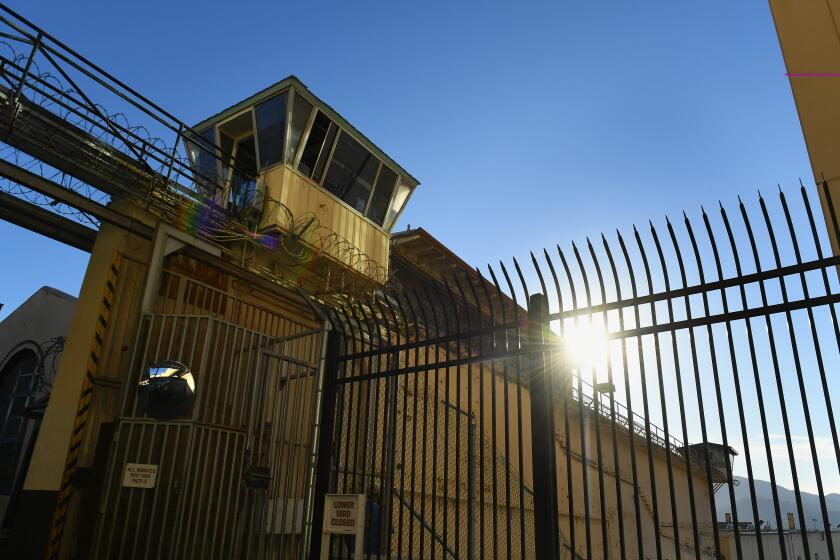Apocalypse deferred
On Oct. 21, the world did not end, despite predictions by Christian radio personality Harold Camping. We have by now laughed him off, but perhaps we owe Camping one more serious hearing. I for one can’t help but ask: What if the apocalypse had happened? Or if not “the” apocalypse, then at least something fairly apocalyptic? That is what occurred 900 years ago. Thousands of people expected the apocalypse, and they got it, though not the one they were expecting. What if that happened again?
But first let’s consider Camping. His forecast of the “last days” followed a classic pattern. He first prophesied that on May 21, thousands of Christians would be called to heaven. But the day came and went without much changing — no souls taken up, no earthquakes, no rivers of blood. On May 22, he described himself as flabbergasted, adding: “It’s been a really tough weekend.”
But Camping did not embrace disappointment. He deferred it. He had only predicted the Rapture — a belief of particular importance to many evangelical Christians. At the Rapture, so the belief goes, the saved ascend to heaven, while others remain on Earth awaiting final judgment.
Rather than abandon the dream, Camping modified it. The Rapture, he announced, had occurred in secret, with judgments passed but verdicts not, as expected, spectacularly announced. The Earth nonetheless would still self-destruct on Oct. 21, he maintained.
Not for the first time those awaiting the apocalypse were stood up. Everyone remembers the flop that was Y2K. Fewer recall the “Jupiter effect” of 1982, when doomsayers predicted that an unusual planetary array — in which Mercury, Venus, Earth, Mars, Jupiter, Saturn and Pluto would be in near-alignment on the same side of the sun — would lead to earthquakes and nuclear meltdowns. It would begin, said doomsday evangelist Hal Lindsey, a “countdown to Armageddon.”
Such instances abound, in our time and in ages gone by.
Some medieval examples are surprisingly reminiscent of the Camping model. An unknown number of 10th century Christians, for example, expected the world to end in the year 1000, which they had calculated to be 6,000 years after the Earth’s creation. They based their assumption on the scriptural notion that a day for the Lord is as 1,000 years for man. Because God had created the world in six days, they reasoned, he would destroy it after six more (which would of course translate into 6,000 human years).
As the portentous date loomed, people traveled to Jerusalem, where they expected the action to occur. The antichrist would sit upon his throne there, they believed, but then Christ would strike him dead on the Mount of Olives.
When none of this transpired, the true believers, like Camping 1,011 years later, modified their chronology. The apocalypse wasn’t a millennium after Christ’s birth but rather a millennium after his death — that is, 1033. Again the prophecy prompted mass pilgrimages, and again the pilgrims were disappointed.
The puzzled doomsayers consulted their calendars and concluded that Christ would return on Easter in a year when Good Friday, the day of his death, corresponded with the annunciation of his birth, celebrated on March 25. Such a year was 1065. This time, 12,000 pilgrims headed to Jerusalem for the spectacle they were sure would occur at last. But just short of their goal, they were ambushed by a Turkish army. Those who lived through the attack saw Easter pass without incident.
Once more, 30 years later, in 1095, apocalyptic rumblings restarted. There were reports that anti-Christians (in fact, Muslims), perhaps led by the antichrist, were torturing the faithful in Jerusalem. The last days must be at hand. The pope called for a military expedition to the Holy Land. A hermit named Peter waved a letter that had fallen from heaven warning that “the time of nations” was near.
People responded by the thousands. Without kings, without a central leader, without a discernible practical goal, somewhere in the neighborhood of 100,000 men, women and children, later known as the First Crusaders, marched to the Holy Land expecting to fight God’s battles and bring about the end of the world.
And this time the battles, at least, materialized. On July 15, 1099, the surviving pilgrims stormed Jerusalem, slaughtering its defenders. The streets turned into rivers of blood. Armies of would-be saints joined in the fighting. And a Christian man became, for the first time, king of Jerusalem.
Crusaders wanted an apocalypse, and they got it. And for years afterward Christian men and women who participated in the carnage believed they had helped to usher in the last days, which would surely result in the world’s end soon.
Hope for doomsday springs eternal. A new crop of end-times enthusiasts are now focused on 2012, when the Mayan calendar, according to some, predicts the world’s end. And it’s entirely possible that, in a nation whose politics and religion seem thoroughly fused, where political voices pronounce every argument in stark language of good and evil, where a sizable number of American voters believes that our president secretly plots the overthrow of his nation, this new prophetic end-time dream might yet gain traction.
And if, once again, the expectations of believers are dashed? Prophecies seldom fail; they are simply deferred.
Jay Rubenstein, a MacArthur fellow, is a professor of history at the University of Tennessee, Knoxville, and the author of “Armies of Heaven: The First Crusade and the Quest for Apocalypse.”
More to Read
A cure for the common opinion
Get thought-provoking perspectives with our weekly newsletter.
You may occasionally receive promotional content from the Los Angeles Times.










